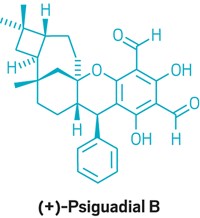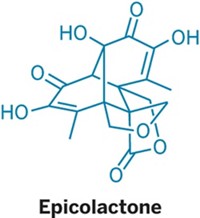Advertisement
Grab your lab coat. Let's get started
Welcome!
Welcome!
Create an account below to get 6 C&EN articles per month, receive newsletters and more - all free.
It seems this is your first time logging in online. Please enter the following information to continue.
As an ACS member you automatically get access to this site. All we need is few more details to create your reading experience.
Not you? Sign in with a different account.
Not you? Sign in with a different account.
ERROR 1
ERROR 1
ERROR 2
ERROR 2
ERROR 2
ERROR 2
ERROR 2
Password and Confirm password must match.
If you have an ACS member number, please enter it here so we can link this account to your membership. (optional)
ERROR 2
ACS values your privacy. By submitting your information, you are gaining access to C&EN and subscribing to our weekly newsletter. We use the information you provide to make your reading experience better, and we will never sell your data to third party members.
Synthesis
Total Synthesis Of Telomerase Agent
Natural product has been a focus of efforts by several synthetic groups
by Stu Borman
January 23, 2006
| A version of this story appeared in
Volume 84, Issue 4

The first total synthesis of UCS1025A, a promising inhibitor of the enzyme telomerase, has been achieved in a remarkably concise fashion. Telomerase inhibitors are potential anticancer agents, as the enzyme is expressed selectively in most cancers.
Several synthetic teams have been striving to synthesize the rare fungus-derived natural product so it could be obtained in quantities sufficient to study its activity and mechanism. Postdoctoral fellow Tristan H. Lambert and chemistry professor Samuel J. Danishefsky of Sloan-Kettering Institute for Cancer Research and Columbia University have now succeeded (J. Am. Chem. Soc. 2006, 128, 426).
The researchers synthesize two precursors of the natural product and then simply join them. This approach circumvents thorny problems encountered earlier in trying to assemble the structure incrementally.
Assembly of one precursor, a tricyclic iodolactone, was based on an approach reported in a 2005 meeting abstract by postdoc Vadims Dvornikovs and chemistry professor Thomas R. Hoye of the University of Minnesota, Twin Cities. "Dvornikovs and Hoye are surely among the real heroes of this fascinating story," Danishefsky says. According to Hoye, his group has completed an alternative synthesis of UCS1025A but hasn't reported it yet.
The other precursor is a decalin aldehyde for which a synthesis was reported last year by professor of chemistry David W. C. MacMillan and coworkers at California Institute of Technology. Coincidentally, that compound corresponds exactly to the coupling fragment Lambert and Danishefsky needed.

The key step in the total synthesis is a stereoselective aldol coupling known as a Reformatsky-type reaction that joins the iodolactone and the decalin aldehyde. The product is then deprotected and a secondary alcohol group is oxidized to yield UCS1025A.
It is "a remarkably concise and beautifully conceived way to construct this intriguing natural product," Hoye says. The joining of a-iodolactone and aldehyde moieties by the action of triethylborane results "in a highly convergent and efficient construction of the target skeleton," he explains.
Mathias Christmann, whose group at RWTH Aachen University, in Germany, is also trying to synthesize UCS1025A, calls the work a landmark achievement. "Without any extravagant reagents or conditions, the natural product was assembled in a few steps," he marvels. The tetramic acid class of compounds to which UCS1025A belongs "is rich in highly interesting natural products, and the new coupling strategy provides the most efficient entry into this class."
Assistant professor of chemistry Brenton DeBoef of the University of Rhode Island, whose group is also pursuing UCS1025A, says interest in the compound stems from its ability to interfere with telomerase, which plays a central role in the life cycle of cells. "When telomerase is upregulated, the cell becomes immortal," DeBoef says. "This is the case with approximately 85% of all tumor cells. However, most somatic cells contain no telomerase activity. Consequently, telomerase inhibitors have the potential to be very selective chemotherapies."
The new synthetic approach appears to be viable for producing "the multigram quantities of UCS1025A that will be required for thorough biological studies" and could also aid the synthesis of derivatives, DeBoef says. Conceivably, a pool of iodolactones could be synthesized and joined with a pool of decalin aldehydes "in a combinatorial fashion to create a small library of potential telomerase inhibitors" that might lead to novel anticancer drugs.





Join the conversation
Contact the reporter
Submit a Letter to the Editor for publication
Engage with us on Twitter